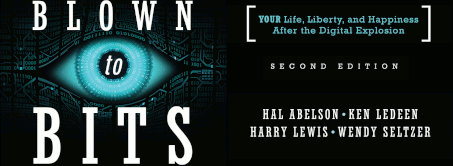Free the White Spaces
Wednesday, August 20th, 2008 by Harry LewisWe’ve devoted a lot of attention on this blog to Net Neutrality — the principle that Internet Service Providers should, like telephone companies, be barred from picking and choosing what service to provide to whom on the basis of the content of the information being delivered. There is another important information policy issue at stake now, and there is an opportunity for members of the public to weigh in on it directly.
“White space” is a part of the radio spectrum not being used by any broadcaster or other party licensed by the government to use it. As we explain in Chapter 8 of Blown to Bits — it’s really the main lesson of that chapter — the government “owns” the entire spectrum and historically has given exclusive licenses to the choicest parts of it to broadcast radio and television stations. Some years ago, a few white spaces were made available for unlicensed use — over the objections of the incumbent broadcasters, who raised alarms about the risk of interference with their broadcasts but, not coincidentally, had nothing to gain from allowing any competing uses of the spectrum. From that small deregulation, the now-ubiquitous wireless Internet devices emerged.
With the switchover to digital television, vastly greater portions of the spectrum are being opened up for possible reassignment to unlicensed uses. Once again, the broadcast industry is mongering fear about degraded television reception. Public interest groups — and certain private companies, Google in particular — are strongly lobbying for deregulation of these white spaces.
You can get a good sense of the issues from reading the last chapter of Blown to Bits. We urge you to support the move toward freeing up the white spaces by signing the (click on it) Free the Airwaves petition. Every vote counts!
